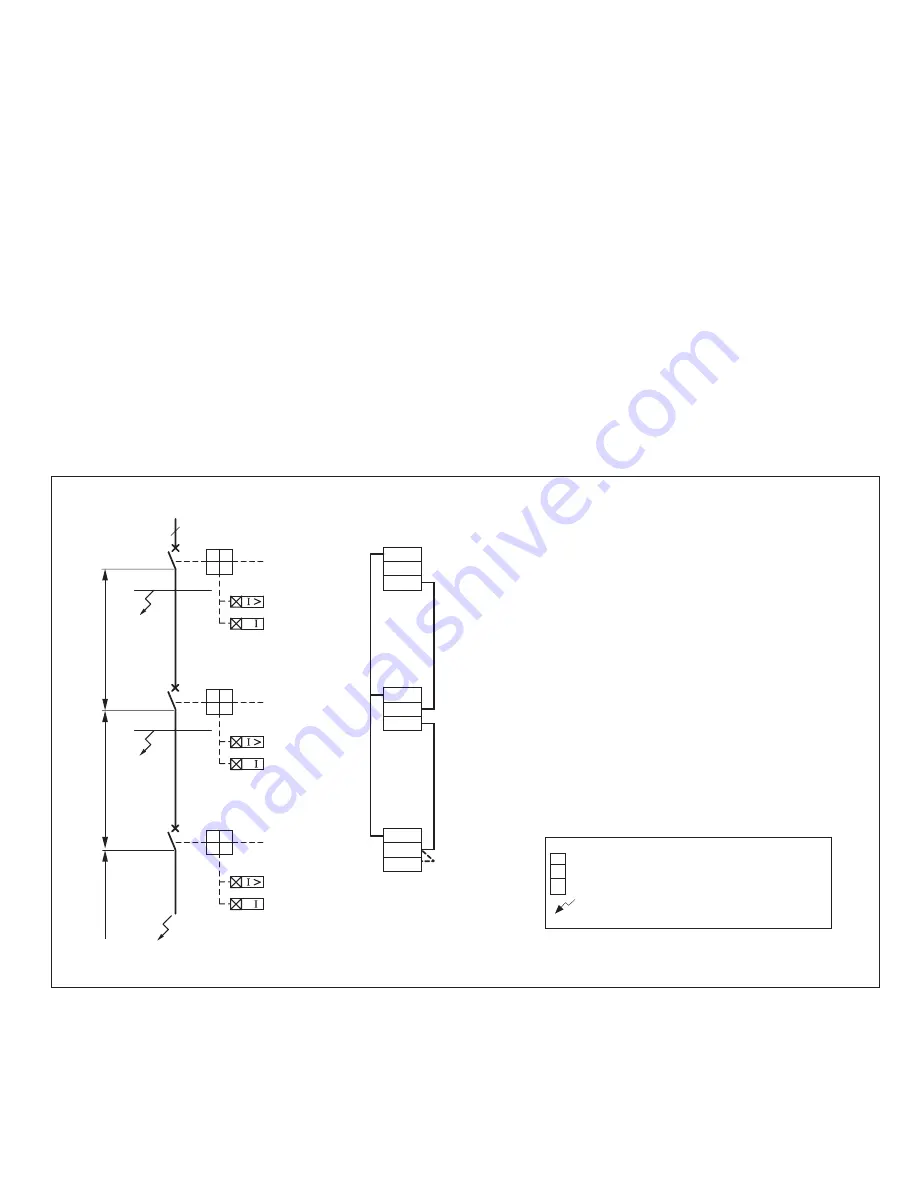
27
Instruction Leaflet
IL01301051E
effective September 2013
Operating Manual for Series NRX
Trip Units - Digitrip™ 520/520M
EATON
www.eaton.com
Appendix A: Zone interlocking examples
Case 1e: There is nN zNne selecoive inoerlNcking. (Soandard oime
delay cNNrdinaoiNn is used.)
Assume that a ground fault of 2000A occurs and refer to
Figure 24
.
Fault at location 3
The branch circuit breaker will trip, clearing the fault in 0.1 seconds.
Fault at location 2
The feeder circuit breaker will trip, clearing the fault in 0.3 seconds.
Fault at location 1
The main circuit breaker will trip, clearing the fault in 0.5 seconds.
Case 2e: There is zNne selecoive inoerlNcking.
Assume a ground fault of 2000A occurs and refer to
Figure 24
.
Fault at location 3
The branch circuit breaker trip unit will initiate the trip in 0.045 seconds
to clear the fault and the branch will send a restraint signal to the
feeder trip unit; the feeder will send a restraint interlocking signal to Z1.
Main and feeder trip units will begin to time out and, in the event that
the branch circuit breaker does not clear the fault, the feeder circuit
breaker will clear the fault in 0.3 seconds (as above). Similarly, in the
event that the feeder breaker does not clear the fault, the main breaker
will clear the fault in 0.5 seconds (as above).
Fault at location 2
The feeder circuit breaker trip unit will initiate the trip in 0.045 seconds
to clear the fault and will send an interlocking signal to the main trip
unit. The main trip unit will begin to time out and, in the event that the
feeder circuit breaker Z2 does not clear the fault, the main breaker will
clear the fault in 0.5 seconds (as above).
Fault at location 1
There are no interlocking signals. The main circuit breaker trip unit will
initiate the trip in 0.045 seconds.
Figure 25
presents a zone selective interlocking connection diagram
for a system with two main circuit breakers from incoming sources
and a bus tie circuit breaker.
Noee:
N
The blocking diode D1 is needed so that the feeder breakers can send
interlocking signals to both the main and the tie breakers and prevent the tie
breaker from sending an interlocking signal to itself.
Figure 24.
∆
∆
1
C
Z0
Zone 1
ZI
C
Z0
Zone 2
Z1
C
Z0
Zone 3
ZI
2
3
Zone
1
Zone
2
Zone
3
∆
12800 A/0,5 s
1200 A/0,5 s
C
= Common (ungrounded)
–28—Contact
ZO
= Zone Out output signal to higher level zone
–27—Contact
ZI
= Zone In input signal from lower level zone
–29—Contact
= Fault at location 2
NNoese:
1
Wiring to be twisted wire pair AWG #14 to #20 (0,5 bis 2,5mm²). Route
zone interlocking wiring separate from power conductors. DO NOT
GROUND any zone interlocking wiring.
2
The maximum distance between two farthest breakers on different
zones (from the ZO downstream to ZI upstream terminals
is 250 feet (76m).
3
A maximum of 20 breakers may be contained in parallel in
one zone.
4
Provide a self-interlocking jumper (on Zone 3) if coordination
is desired with other downstream circuit breakers not providing
the zone interlock feature.
2
Legend
6400 A/0,3 s
400 A/0,3 s
3200 A/0,1 s
200 A/0,1 s
Typical ZNne InoerlNcking
















































